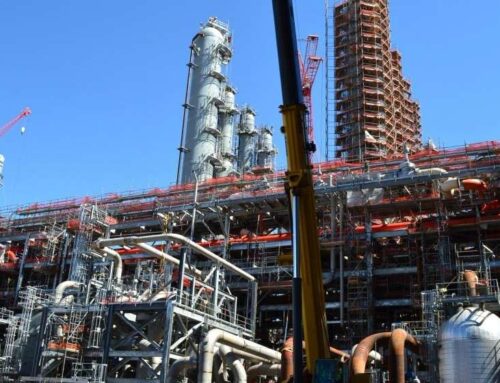On Tuesday, April 1, 2014, Senate Finance Committee Chair Ron Wyden (D-OR) released the version of the tax extenders package that the Committee would be considering. Tax extenders are a hodge-podge of generally narrow interest tax expenditures (breaks) that are only authorized for a year or two. Over the years, the package has grown to include more than 50 provisions ranging from benefits for NASCAR track owners to write offs to race horse owners to subsidies for film and television production to tax breaks for alternative fuels and biodiesel.
The Wyden package whittled away some of these breaks but most remain. There will be an effort to restore many of the tax expenditures left on the cutting room floor on Thursday, April 3. In reality, Congress should scrap the whole package and concentrate on comprehensive tax reform – if these provisions are worthy, they should be included in the code, if not they should be scrapped. Extending a provision five times for two years costs the same as a ten year provision, but in Congressional budget scoring terms a two year extension is costed out as just a two year extension. It’s time to end the gimmicks and the games.
Below is a description of each of the ENERGY provisions in the package. This will be updated with additional TCS commentary and as it is amended in the Committee process.
The following are additions to the Chairman’s version released on April 1, as of April 3, 2014:
Credit for Nonbusiness Energy Property (sec. 25C of the Code)
Present law provides a 10-percent credit for the purchase of qualified energy efficiency improvements to existing homes. The proposal expands qualifying property to include all roof and roof products that meet Energy Star program guidelines. The proposal modifies certain efficiency standards for qualifying property.
Estimated cost to taxpayers: $1.648 billion over 11 years. Cost in FY2015: $807 million.
Credits with Respect to Facilities Producing Energy from Certain Renewable Resources (secs. 45 and 48 of the Code)
An income tax credit is allowed for the production of electricity from qualified energy resources at qualified facilities (the “renewable electricity production credit”). Qualified energy resources comprise wind, closed-loop biomass, open-loop biomass, geothermal energy, solar energy, small irrigation power, municipal solid waste, qualified hydropower production, and marine and hydrokinetic renewable energy. The proposal extends the renewable electricity production credit and the election to claim the energy credit in lieu of the electricity production credit for two years, through December 31, 2015.
Estimated cost to taxpayers: $116 million over 11 years (through FY2024). Cost in FY2015: $13.347 billion.
Energy Efficient Commercial Buildings Deduction (sec. 179D of the Code)
A taxpayer may take an immediate deduction equal to energy-efficient commercial building property expenditures made by the taxpayer. The proposal extends the deduction for two years, through December 31, 2015. Additionally, the proposal permits tribal governments and non-profits (as defined in section 501(c)(3)) to allocate the deduction to the person primarily responsible for designing the property, in the same manner as is allowed for public property. Finally, the proposal increases the efficiency standards such that by 2015 qualifying buildings are determined relative to the ASHRAE/IESNA 90.1-2007 standards.
Estimated cost to taxpayers: $304 million over 11 years (through FY2024). Cost in FY2015: $175 million.
———————————————————————————————————————————-
The following is a revenue raiser, added to the Chairman’s Mark, as of April 3, 2014:
Exclusion from Gross Income of Certain Clean Coal Power Grants
This provision would exclude grants and awards for the Clean Coal Power Initiative from gross income.
Revenue raised: $4 million over 11 years. Cost in FY2015: $60 million.
———————————————————————————————————————————-
The following are original provisions in the April 1 Chairman’s proposal:
Excise Tax Credits and Outlay Payments for Alternative Fuel, and Excise Tax Credits for Alternative Fuel Mixtures (including extension for liquefied hydrogen)
Both the alternative fuel credit and the alternative fuels mixture credit were enacted by the 2005 Highway Bill to provide a tax credit for alternative fuels, which includes high carbon fuels produced from coal, oil shale, biomass, and tar sands. It specifically provides a tax credit for “compressed natural gas (based on 121 cubic feet), liquefied natural gas, liquefied petroleum gas, P-Series fuel, liquid fuel derived from coal through the Fischer-Tropsch process, and compressed or liquefied gas derived from biomass.” Companies that produce unconventional fuels receive a production tax break of 50 cents per gallon; companies that blend traditional fossil fuels with small amounts of high carbon fuels receive the same tax benefit. The credits expired at the end of 2013 (except for hydrogen which expires at the end of FY2014) but would be extended for two years under the EXPIRE Act.
Estimated cost to taxpayers: $903 million over 11 years (through FY2016). Cost in FY2015: $780 million.
Alternative Fuel Vehicle Refueling Property (including extension for hydrogen property)
This tax credit enables refueling properties dispensing certain alternative fuels to receive a refueling property credit. This provides a 30 percent tax break for gasoline stations or other facilities installing biodiesel or 85 percent ethanol (E85) blender pumps, or repowering sites for electric vehicles. Stations dispensing natural gas, liquefied natural gas (LNG), and liquefied petroleum gas (LPG) are also eligible. The credit was first passed in the 2005 energy bill. The credit expired at the end of 2013, but it would be extended for two years under the EXPIRE Act (except for hydrogen which expires at the end of 2014).
Estimated cost to taxpayers: $89 million over 11 years (through FY2024). Cost in FY2015: $65 million.
Alternative Motor Vehicle Credit for Qualified Fuel Cell Motor Vehicles
This credit was first included in the Energy Policy Act of 2005. It provides a tax credit for vehicles running on fuel cells, which convert chemical energy into electricity. The credit rate varies with the weight of the vehicle and was supposed to expire at the end of 2014 but the EXPIRE Act would extend it until the end of 2015.
Estimated cost to taxpayers: $47 million over 11 years (through FY2016). Cost in FY2015: $30 million.
Credit for Plug-in Electric Motorcycles
This credit goes to electric plug-in motorcycles. Unlike previous counterparts, this most recent iteration of the credit no longer includes non-highway low speed vehicles, like golf carts, or three-wheeled vehicles. The credit is extended for two years and expires at the end of 2015.
Estimated cost to taxpayers: $2 million over 11 years (through FY2016). Cost in FY2015: $2 million.
Biodiesel and Renewable Diesel Tax Credits
The biodiesel tax credit of $1 per gallon was created in the 2004 American Jobs Creation Act while the credit for renewable diesel was created in the 2005 energy bill. Eligible biodiesel feedstocks include virgin oils, including esters derived from corn, soybeans, sunflower seeds, cottonseeds, canola, crambe, rapeseeds, safflowers, flaxseeds, rice bran, mustard seeds, and camelina, and from animal fats. The EXPIRE Act would extend the credits for two years through 2015.
Estimated cost to taxpayers: $2.565 billion over 11 years (through FY2016). Cost in FY2015: $1.276 billion.
Credit for Production of Cellulosic Biofuel (Second Generation Biofuel Producer Credit)
Since passage of the 2008 farm bill, cellulosic ethanol facilities have been able to receive a tax credit of $1.01 for each gallon of biofuel produced. However, since few facilities are producing this biofuel at commercial scale, the tax credit been largely irrelevant. With various technological and economic challenges facing the industry, analysts predict that production will unlikely meet Renewable Fuel Standard (RFS) volumes set forth in the 2007 energy bill. Cellulosic biofuels are produced from biomass materials like agricultural residues, wood chips, perennial grasses, and municipal solid waste. The EXPIRE Act would extend the cellulosic biofuel production credit, which expired at the end of 2013, for two years through the end of 2015.
Estimated cost to taxpayers: $55 million over 11 years (through FY2016). Cost in FY2015: $28 million.
Cellulosic Biofuel Bonus Depreciation
Cellulosic biofuel producers not only benefit from a generous production tax credit, but they also receive special tax treatment through special depreciation rules. Eligible facilities can “expense 50 percent of their eligible capital costs in the first year,” meaning that their tax liability is reduced for the first year of operation. This special depreciation provision was created in the Tax Relief and Health Care Act of 2006. The EXPIRE Act extended this special treatment for cellulosic producers and algae-based biofuels producers through the end of 2013.
Estimated cost to taxpayers: $1 million over 11 years (through FY2024). Cost in FY2015: $3 million.
Credit for the Production of Indian Coal (sec. 45(e)(10) of the Code)
A credit is available for the production of Indian coal sold to an unrelated third party from a qualified facility for a seven-year period beginning January 1, 2006, and ending December 31, 2013. The amount of the credit for Indian coal is $1.50 per ton for the first four years of the seven-year period and $2.00 per ton for the last three years of the seven-year period. Beginning in calendar years after 2006, the credit amounts are indexed annually for inflation using 2005 as the base year. The credit amount for 2013 is $2.308 per ton. The proposal extends the credit for the production of Indian coal for two years (through December 31, 2015). The placed-in-service date for qualified facilities is not extended, but the proposal clarifies that qualified Indian coal facilities that are leased or subleased after December 31, 2008, do not lose their eligibility as a result of such lease or sublease.
Estimated cost to taxpayers: $76 million over 11 years (through FY2021). Cost in FY2015: $31 million.
Credit for Energy Efficient New Homes (sec. 45L of the Code)
Present law provides a credit to an eligible contractor for each qualified new energyefficient home that is constructed by the eligible contractor and acquired by a person from such eligible contractor for use as a residence during the taxable year. The credit equals $1,000 in the case of a new home that meets the 30-percent standard and $2,000 in the case of a new home that meets the 50-percent standard. Only manufactured homes are eligible for the $1,000 credit. The proposal extends the credit to homes that are acquired prior to January 1, 2016.
Estimated cost to taxpayers: $612 million over 11 years. Cost in FY2015: $192 million.










